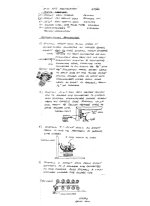I am preparing to do the RFI modification for my Audio Research SP-10 preamp (see attached). The instructions call for 1000pf 1kV ceramic disc capacitors to be installed between all power supply output lines and ground, except for B+, for which they specify a 1000pf 680v syrene capacitor. This leads me to a couple of questions:
1. Does "Syrene" mean "polystyrene"?
2. Mouser only has 1000pf polystyrene capacitors up to 500v. Can I substitute a different cap type here?
1. Does "Syrene" mean "polystyrene"?
2. Mouser only has 1000pf polystyrene capacitors up to 500v. Can I substitute a different cap type here?
Attachments
Yes,"syrene" will mean polystyrene.
You could substitute a 1000pF 1kV NPO ceramic - KEMET C322C102KDG5TA is available at Mouser.
And you could, if you can bear the expense, use the same cap for all locations
You could substitute a 1000pF 1kV NPO ceramic - KEMET C322C102KDG5TA is available at Mouser.
And you could, if you can bear the expense, use the same cap for all locations
Yes. NPO means that the dielectric has
- a zero temperature coefficient (which is useful in a hot valve preamp)
- does not change its capacitor value with applied voltage (which is very important in high voltage circuits - and that means, effectively, anything over 5V)
- very low DA and DF, equal to any of the best plastic dielectrics with the possible exception of PTFE (which means that it does not contribute to distortion and noise)
- 0.1uF is about as big as they get
- cost
- size
- often confused with the lower grade ceramics dielectrics like X7R etc by people who can't/won't read...
Two things that make for a stable capactor value are: not absorbing moisture from the air, and having a low tempco.
Many types of plastic film readily absorb moisture from the air or expand a lot on temperature rise, PS and PTFE are both highly crystalline at room temperature and non-polar so perform well.
Ceramics don't absorb moisture, but only NP0/C0G types have a low tempco, many others have enormous tempcos as they are ferroelectric.
The typical application where PS caps would be used is an RF oscillator or a multipole filter circuit (active or passive). They are much less common now due to high-order filtering being done with DSP now and RF oscillators using PLLs.
Many types of plastic film readily absorb moisture from the air or expand a lot on temperature rise, PS and PTFE are both highly crystalline at room temperature and non-polar so perform well.
Ceramics don't absorb moisture, but only NP0/C0G types have a low tempco, many others have enormous tempcos as they are ferroelectric.
The typical application where PS caps would be used is an RF oscillator or a multipole filter circuit (active or passive). They are much less common now due to high-order filtering being done with DSP now and RF oscillators using PLLs.
Thank you all. You have perfectly answered my question!
I very much did not want to be that guy!
- often confused with the lower grade ceramics dielectrics like X7R etc by people who can't/won't read...
I very much did not want to be that guy!
